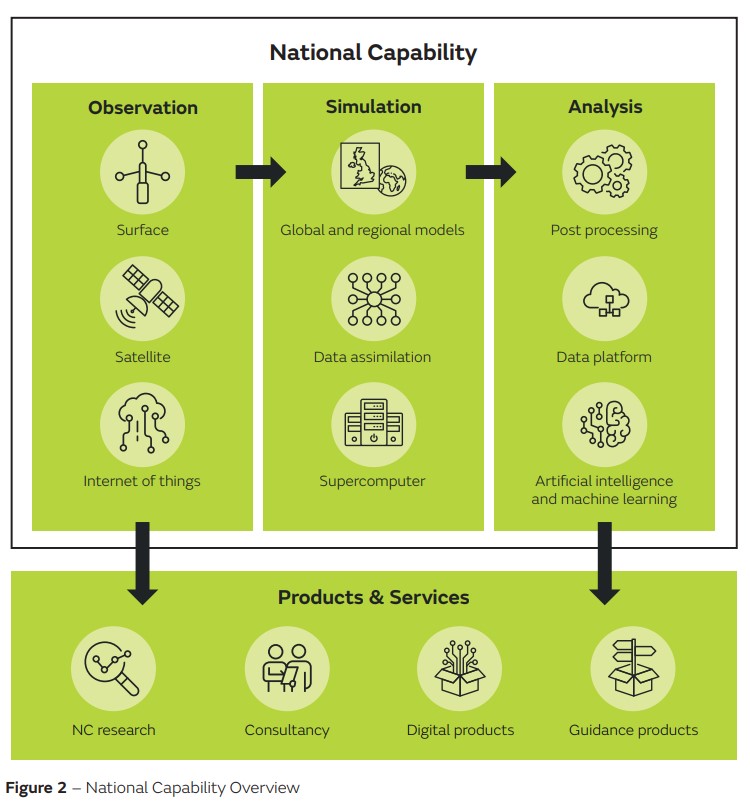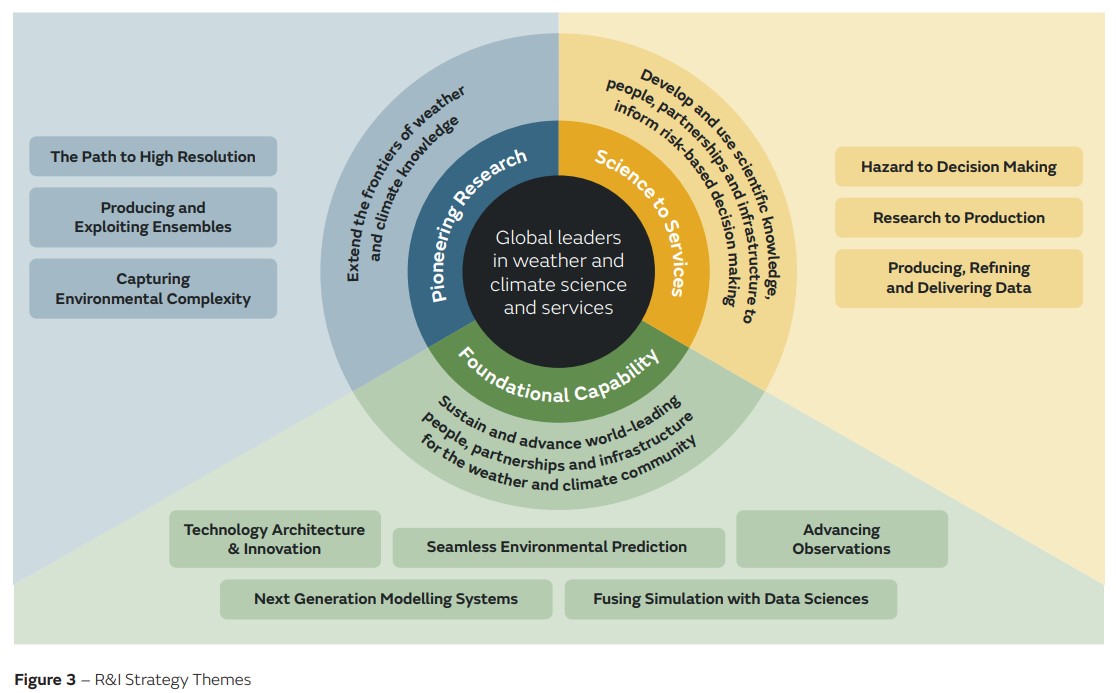Research and Innovation Strategy
The Met Office Research and Innovation Strategy sets out our aims for the next 10 years across science, technology and operations
Weather and climate science and services in our changing world
As our ability to better understand and predict future weather and climate develops, so too do the expectations of our customers and stakeholders. These evolving demands, together with the opportunities provided by new technology, provide the drivers for our Research and Innovation Strategy. This refreshed version of the Met Office Research and Innovation Strategy introduces our National Capability which combines the driving forces of science, technology, and observations to deliver world-leading weather and climate science and services, support national and international needs, and respond to emergencies.
 Introducing our National Capability
Introducing our National Capability
Weather and climate is big science, requiring large numbers of observations and data, large scale software and large-scale compute and storage. Because of this, the UK requires a weather and climate National Capability. The weather and climate National Capability encompasses the science and technology required to deliver the data which underpins weather and climate services, allowing the UK to deliver world-leading weather and climate science and services, support national strategic needs, and respond to emergencies.

This schematic reflects the weather and climate National Capability and consists of:
• Observations of the Earth system.
• The software and hardware for Simulation of weather and climate.
• Post-processing and data platforms for Analysis into weather and climate information.
Transforming our National Capability
To transform our National Capability, we have identified three core workstreams and eleven Research and Innovation themes:

- Foundational capability - The people, partnerships and infrastructure that enables the weather and climate community to meet UK and global strategic needs. As part of our refreshes Research and Innovation strategy, our Foundational Capability workstream features two new themes: Advancing Observations and Technology Architecture & Innovation. Learn more about this workstream.
- Science to services - The way we develop and use scientific knowledge and services to inform risk-based decision making. Learn more about this workstream.
- Pioneering research - The fundamental research we do to extend the frontiers of weather and climate knowledge. Learn more about this workstream.
Cross-cutting themes
The ambition and vision within this strategy can only be realised with three cross-cutting themes which enable all areas of our science, technology and operations, namely People, Practices and Partnerships.

People
Talented and driven people will be at the heart of delivering our ambitious agenda. And so, it will be essential to attract, retain and develop diverse talent across science, technology and operations at a time when the nature of the workplace, and expectations of staff, are changing.
Partnerships
This strategy demands an increase in the range of skills and expertise we shall need to bring to bear, and so working in partnership will become more important than ever before. We shall develop and nurture our existing partnerships, within the weather and climate domain, in universities, national research centres, ECMWF and other national met services, as well as with our technology partners in the commercial arena and international data standards bodies.
Practices
People and partnerships need to be supported through the right working practices, be it the way we organise our working lives, the way we organise and deploy our teams, the standards we adopt, or the technology we use. We shall need to embrace new approaches, and ensure staff are trained in best practice in computing, coding, observation, and research tools.


